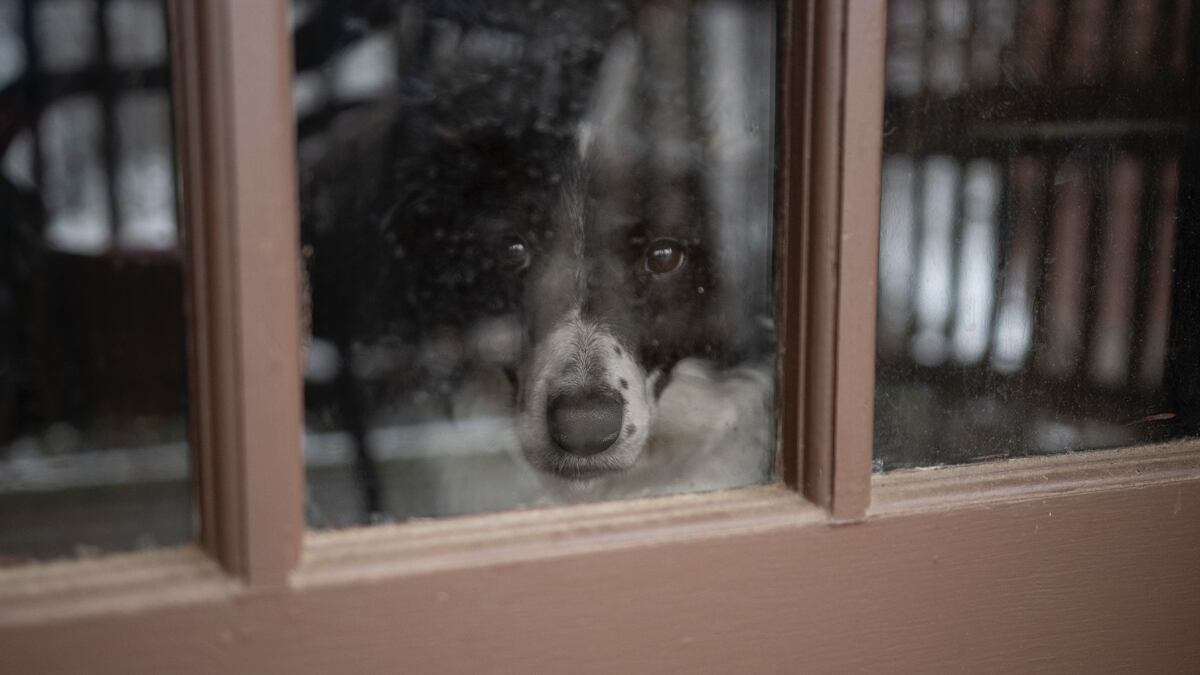Pets, if nobody else, have had a pretty good couple of years.
A large number of people transitioned to remote work during the pandemic, and if you were one of them, your animals got used to spending all day with their favorite person: you.
They’ve been living the good life, and pets acquired since 2020 might not even realize there’s any other way to spend the day—home alone with nothing but some old chew toys to keep them company.
Now, as more workplaces begin calling employees back to the office, some of those pets are in for a rude awakening. To ease this transition, WW spoke with two local animal behaviorists who shared tips on how to reduce your pet’s chances of developing separation anxiety.
Look for Signs of Stress
Full-blown separation anxiety is one of the hardest behavioral issues to overcome in pets, says Dr. Caroline Spark, director of behavior and training at Instinct Dog Behavior & Training.
“It’s like working with panic attacks in humans, or extreme anxiety. Those big feelings don’t change easily,” she explains. “It’s better to intervene early, rather than wait until it gets to that really major panicky stage.”
Valli Parthasarathy, co-founder and behaviorist at Synergy Behavior Solutions, says cats, birds and dogs experiencing acute separation anxiety will all typically demonstrate some combination of three symptoms: vocalization, destruction, and urination/defecation.
While a gnawed-on couch or a puddle of cat pee outside the litterbox are pretty obvious signs of distress, indications of less severe anxiousness in your absence may be more subtle—but also an opportunity for early intervention once noticed. Pay attention to your pet’s body language while you’re going through your departure routine, like putting on your shoes and coat and grabbing your keys.
“They might pace, they might have their ears back and their little brows furrowed, they might be hiding, they might be panting,” Parthasarathy says. “Sometimes a dog might go and sit by the door and stare.”
Play Detective
If you’re worried about your pet’s mental state, set up a camera. Seriously.
It’s an invaluable investigative tool, Parthasarathy stresses. You really can’t interpret much about your pet’s emotional health or behavior without the ability to watch them.
Parthasarathy recalled a recent instance in which she was approached by a client with an elderly dog and a younger dog who’d started coming home to find accidents on the floor. The pet parent assumed it was a sign of separation anxiety in the pup, since that newer pet hadn’t spent much time alone before.
However, after installing a recording device, they discovered the younger dog was fine—chipper even. But the senior pooch could no longer navigate through the dog door. The problem wasn’t behavioral at all. Without the footage, the client would have wasted a lot of time and money trying to figure out a solution.
“The key way to diagnose, ideally, is to have videotape,” Parthasarathy says.
Transition Slowly
Let’s say your boss has summoned you to return to the office in June, and your 2-year-old pet has never been left home alone for an eight-hour workday. Use that advance notice to begin acclimating the animal as gradually as possible. Spark recommends drafting a timeline.
“The thing to know about separation stress or anxiety is that it doesn’t resolve quickly. It’s difficult to do it in a weekend,” she says. “It’s really much better worked with slowly over time, because you don’t want to expose your dog to the experience of being alone as a bad experience.”
If you have a pet who likes to shadow you around the house, start by shutting the door behind you. Your animal will see that the world didn’t end just because they weren’t underfoot while you answered some emails or made a sandwich.
The next step is to work up to short bursts of total separation—leave your pet alone in the house for a few minutes at a time. Spark recommends grabbing your mail or running a quick errand.
“Your dog starts to learn, ‘I can be by myself and nothing bad happens,’” Spark says.
Create Positive Diversions
Who says you have to be above bribery?
Sweetening the pot with treats is fully encouraged. It helps distract your pet from their stress and replaces bad feelings with positive associations. Puzzle toys are a good distraction, too—as you leave, your pet is engaged in a solo, enriching activity.
“Practice picking up the keys and going out the front door,” Spark explains, “but while that’s happening, the dog is hunting down a handful of treats you threw on the ground.”
Not sure if your animal needs professional help? Ask an expert.
Not all situations require professional intervention. But for ones that do, it’s imperative to act as quickly as possible. Extreme cases of anxiety that can’t be solved through behavioral therapy may require medication.
“If the dog has a true problem with being left alone, separation anxiety can take several months to see the effects of treatment,” Parthasarathy says. “Veterinarians are really backed up right now. Trainers are really backed up right now. Knowing there is a problem earlier is going to give you the opportunity to get some help earlier.”

